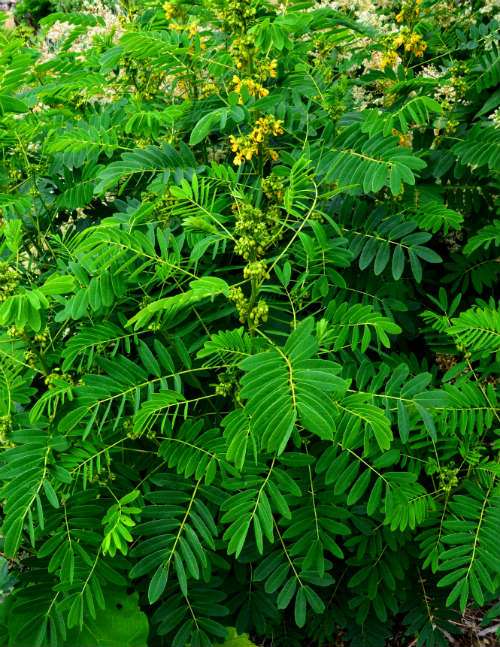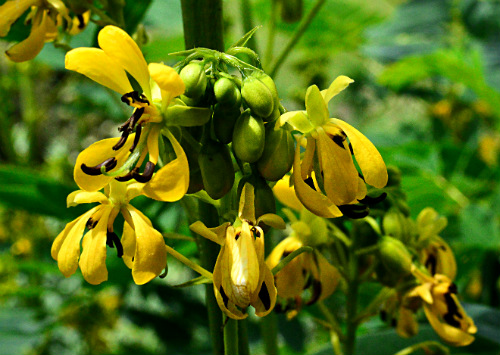Plant of the Month for October, 2017

(SEN-nuh hee-be-KAR-puh)
General Information:
Senna hebecarpa is rarely grown in gardens but it deserves to be used more frequently. It is a perennial that can grow to 180 cm (six feet) and has unusual compound leaves. Both of these features make it look more like a shrub.

Senna hebecarpa:photo by Robert Pavlis
Common names include American senna, wild senna and the northern wild senna. It is a North American legume, that hosts nitrogen fixing bacteria in it's root nodules.
The flowers of wild senna are unusual in that they lack nectaries which are normally used by plants to attract pollinators. Instead this plant has nectaries on the leaf petioles which attract beneficial insects like ants, parasitic wasps and lady beetles. instead of using nectar to attract pollinators it uses special pollen. A 2016 study by Penn State found that bees are attracted to plants that produce high protein-to-lipid ratio pollen. Bumble bees foraged preferentially on Senna hebecarpa for this reason.

Senna hebecarpa:photo by Robert Pavlis
A potential problem with S. hebecarpa is that it seeds around a bit and larger seedlings can be difficult to pull out. I deadhead mine before the seeds mature. It is not clear how big of a problem this is since the plant is uncommon in the wild, but legumes tend to be good at spreading seeds.
Life Cycle: perennial
Height: 90 – 180 cm (3 – 6 ft)
Bloom Time: late summer
Natural Range: North Eastern North America
Habitat: open woodlands, moist meadows, disturbed areas
Synonyms: Cassia hebecarpa
Cultivation:
Light: part shade to full sun
Soil: grows in most soil types
Water: likes moisture but will grow quite dry
USDA Hardiness Zone: 5 – 9
Propagation: seed, division
Seedex availability (ORG&HPS annual Seed Exchange): frequently
Requires scarification. Nick or rub between sheets of sandpaper. See https://youtu.be/icB9HrqdQqU Seed coat of Baptisia and Oxytropis and other Fabaceae can be scarified by soaking in boiling water. See http://botanicallyinclined.org/continuing-the-sowing-in-hot-water
